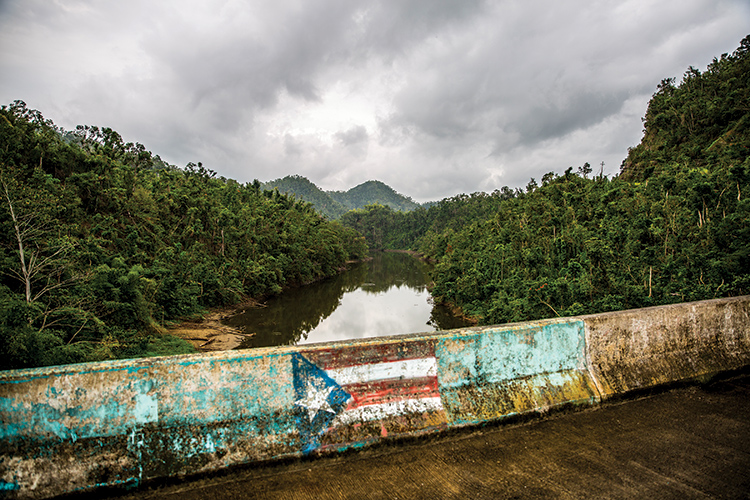Source: James Urton, Columns, August 30, 2018.
Six months after the hurricanes and five months before power was restored, UW volunteers worked with community organizers to install solar panels on rooftops in a remote part of Puerto Rico, bringing power to those who needed it most.

A Doberman keeps watch as four strangers approach the homeowner. Their words are drowned out by the oppressive drill of a gasoline generator enthroned on a carport littered with tools. The four visitors, all engineers from the University of Washington, shout and gesture toward the house’s corrugated metal roof. When the man finally nods and walks to the generator to silence it, the playful, popping croaks of amphibians fill the void.
The team from the UW works quickly in the fading light of the day. Mareldi Ahumada Parás and Wesley Tatum, both doctoral students in engineering, climb to the roof to secure four flexible solar panels with lengths of bright yellow rope.
“Are you finished?” shouts Anya Raj, ’17, from the ground. “Can I feed the wires through?” Tatum nods, and Raj eases wires originating from the panels on the roof into the house through a small hole in the wall. Hugo Pontes, a UW undergraduate, lights their efforts with his smartphone. Then the team connects the wires to a battery inside the home. As they complete their work, a teenager emerges from the house and restarts the gasoline generator for one more night.
This home hasn’t been connected to Puerto Rico’s power grid in six months, not since Hurricane Maria blew through and triggered the longest blackout in U.S. history. At the time of the visit, roughly 150,000 businesses and homes were still without power. Rising to meet the need, UW students, public health scientists and engineers have organized to assist those in this region with the greatest needs, and to learn from them.